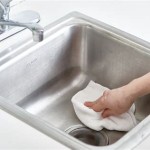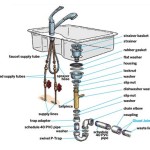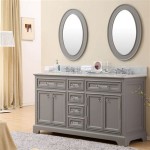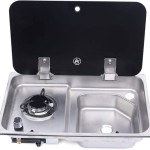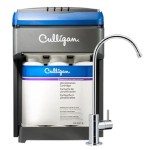Free Standing Bathroom Sink Vanity: A Comprehensive Guide
A free-standing bathroom sink vanity, also known as a floor-mounted vanity, is a self-supporting cabinet that houses a sink. Unlike wall-mounted vanities, free-standing units rest directly on the floor, providing a stable and independent structure. These vanities come in a wide array of styles, sizes, and materials, making them a versatile choice for various bathroom designs. This article provides a detailed exploration of free-standing bathroom sink vanities, encompassing their benefits, design considerations, installation aspects, and maintenance tips.
Advantages of Free Standing Bathroom Sink Vanities
Free-standing vanities offer several advantages over other vanity types, making them a popular choice for both new construction and bathroom remodels.
Enhanced Storage Capacity: Typically, free-standing vanities provide ample storage space. The cabinet beneath the sink can house drawers, shelves, or a combination of both, allowing for organized storage of toiletries, cleaning supplies, and other bathroom essentials. The size and configuration of the storage space can vary significantly depending on the specific model.
Ease of Installation: Compared to wall-mounted vanities, free-standing models are generally easier to install. Because they rest on the floor, they do not require the same level of structural support or specialized mounting hardware. This can translate to lower installation costs and a simpler DIY project for homeowners with basic plumbing and carpentry skills.
Variety of Styles and Designs: Free-standing vanities are available in a vast range of styles, from traditional and rustic to contemporary and minimalist. This allows homeowners to select a vanity that perfectly complements their existing bathroom décor and reflects their personal aesthetic. Furthermore, materials used can range from solid wood and engineered wood to metal and glass, offering diverse options for both visual appeal and durability.
Flexibility and Portability: While not intended for constant relocation, free-standing vanities possess a degree of flexibility compared to built-in units. If a bathroom renovation involves rearranging the layout, a free-standing vanity can be moved with relative ease, provided the plumbing connections are adjusted accordingly. This adaptability can be beneficial for future remodeling projects.
Key Design Considerations
Selecting the right free-standing vanity involves careful consideration of several design factors to ensure both functionality and aesthetic harmony within the bathroom space.
Size and Dimensions: Accurately measuring the available space is crucial. The vanity should fit comfortably within the bathroom without obstructing movement or overcrowding the area. Consider the width, depth, and height of the vanity, ensuring that it aligns with the overall proportions of the room. A vanity that is too large can overwhelm a small bathroom, while one that is too small may not provide adequate storage.
Style and Aesthetic: The vanity's style should complement the overall design of the bathroom. For a traditional bathroom, a vanity with ornate detailing and a classic finish may be appropriate. In a contemporary bathroom, a minimalist vanity with clean lines and a sleek finish would be a better fit. Consider the color, material, and hardware of the vanity to ensure it coordinates with other bathroom fixtures and finishes.
Material and Durability: The material of the vanity significantly impacts its durability and longevity. Solid wood vanities offer a classic and durable option, but they can be more expensive and require proper sealing to prevent water damage. Engineered wood vanities, such as MDF or plywood, are more affordable and resistant to moisture, but they may not be as aesthetically pleasing. Consider the level of humidity in the bathroom and choose a material that is suitable for the environment.
Countertop Material: The countertop is a crucial element of the vanity and should be chosen for both its aesthetic appeal and its functional properties. Common countertop materials include granite, marble, quartz, and solid surface. Granite and marble offer a luxurious look and are highly durable, but they require regular sealing to prevent staining. Quartz is a low-maintenance and durable option that is available in a wide range of colors and patterns. Solid surface countertops are non-porous and easy to clean, making them a practical choice for a busy bathroom.
Sink Type: Free-standing vanities can accommodate various sink types, including undermount, drop-in, vessel, and integrated sinks. Undermount sinks are installed beneath the countertop, creating a seamless and easy-to-clean surface. Drop-in sinks are installed from above the countertop and have a visible rim. Vessel sinks sit on top of the countertop, creating a visually striking focal point. Integrated sinks are molded directly into the countertop, creating a seamless and hygienic surface. The choice of sink type depends on personal preference and the overall style of the bathroom.
Installation Considerations
Proper installation is essential to ensure the stability and functionality of a free-standing bathroom sink vanity. While some homeowners may opt for professional installation, others may choose to tackle the project themselves. Regardless of the approach, careful planning and adherence to best practices are crucial.
Preparation: Before beginning the installation process, it is essential to gather all necessary tools and materials. This includes the vanity itself, a level, a drill, a screwdriver, a measuring tape, a pencil, a pipe wrench, a basin wrench, Teflon tape, and plumber's putty. Additionally, it is important to shut off the water supply to the bathroom and disconnect the existing sink and plumbing.
Plumbing Connections: The plumbing connections must be properly aligned and leak-proof. Connect the water supply lines to the faucet and the drain pipe to the sink drain. Use Teflon tape to seal the threads of the plumbing connections and plumber's putty to seal the drain flange to the sink. After connecting the plumbing, turn on the water supply and check for leaks. Tighten any connections as necessary to eliminate leaks.
Leveling and Securing: Ensuring that the vanity is level is crucial for its stability and aesthetic appeal. Use a level to check the vanity's alignment and adjust the feet or shims as needed to achieve a perfectly level surface. Once the vanity is level, secure it to the wall using screws or brackets. This will prevent the vanity from tipping over and provide added stability.
Sealing and Caulking: To prevent water damage and mold growth, it is important to seal and caulk around the vanity. Apply a bead of caulk along the back of the vanity where it meets the wall. This will create a waterproof seal and prevent water from seeping behind the vanity. Also, apply caulk around the sink where it meets the countertop. This will prevent water from seeping into the cabinet beneath the sink.
Maintenance and Care
Proper maintenance and care are essential to prolong the life of a free-standing bathroom sink vanity and keep it looking its best.
Regular Cleaning: Regularly clean the vanity with a mild soap and water solution. Avoid using abrasive cleaners or harsh chemicals, as these can damage the finish of the vanity. Wipe down the vanity with a soft cloth after cleaning to prevent water spots.
Addressing Spills Promptly: It is crucial to address spills promptly, especially those involving acidic or staining substances. Wipe up spills immediately with a clean, dry cloth to prevent permanent damage to the countertop or cabinet. Avoid allowing standing water to accumulate on the vanity's surface.
Protecting from Moisture: Bathrooms are inherently humid environments, and excessive moisture can damage a free-standing vanity over time. Ensure adequate ventilation in the bathroom by using the exhaust fan during and after showers. Consider using a dehumidifier to control humidity levels. Periodically inspect the vanity for signs of water damage, such as swelling, warping, or mold growth, and address any issues promptly.
Maintaining Plumbing Connections: Regularly inspect the plumbing connections beneath the vanity for leaks. Tighten any loose connections and replace any worn or damaged parts. Clean the drain regularly to prevent clogs. Consider using a drain strainer to catch hair and other debris.
By carefully selecting, installing, and maintaining a free-standing bathroom sink vanity, homeowners can enhance the functionality and aesthetic appeal of their bathroom space, creating a comfortable and stylish environment.

Nameeks Sky23 By Nameek S Sky Free Standing Bathroom Vanity Modern 32 Brown Oak Thebathoutlet

600mm Bathroom Vanity Unit Freestanding 60cm Sink Cabinet Basin Oak Effect Storage Classic Diy At B Q

Know When To Opt For A Freestanding Bathroom Vanity Wide Canvas

Holaki 30 Inch Freestanding Bathroom Vanity With White Ceramic Sink 2 Soft Close Cabinet Doors Plain Light Oak Wal Com

Free Standing Vanity Cabinets Bathroom Set Oak 60cm Impact Furniture

Freestanding Bathroom Vanity Units Cabinets

Nameeks Sky16 By Nameek S Sky Free Standing Bathroom Vanity Modern 32 Glossy White Thebathoutlet

Holaki 30 Inch Freestanding Bathroom Vanity With Black Ceramic Sink 2 Soft Close Cabinet Doors Plain Light Oak Wal Com

Pemberton Floor Standing Handless 2 Draw Unit Grey And Basin At Bathroom City

Atla Free Standing Oak Bathroom Vanity Unit Click
